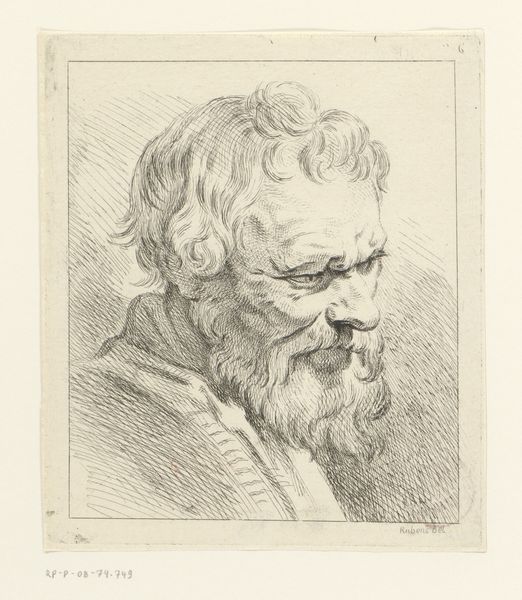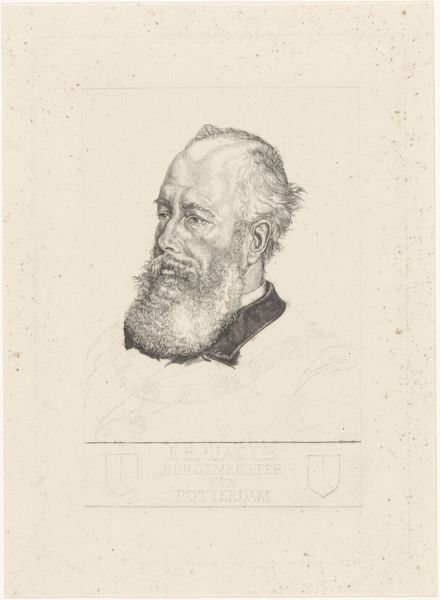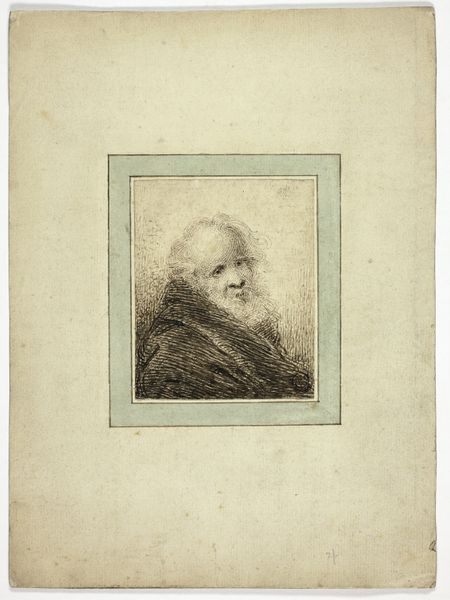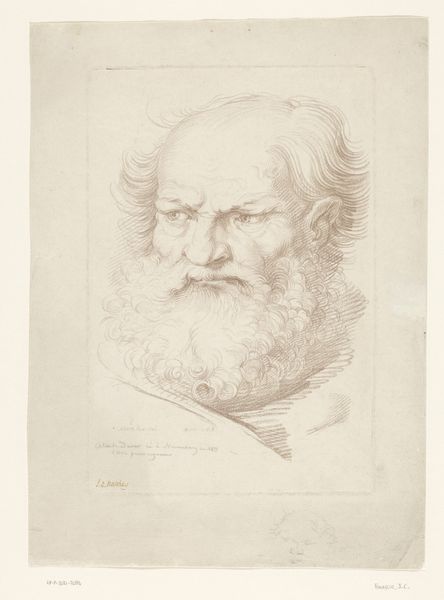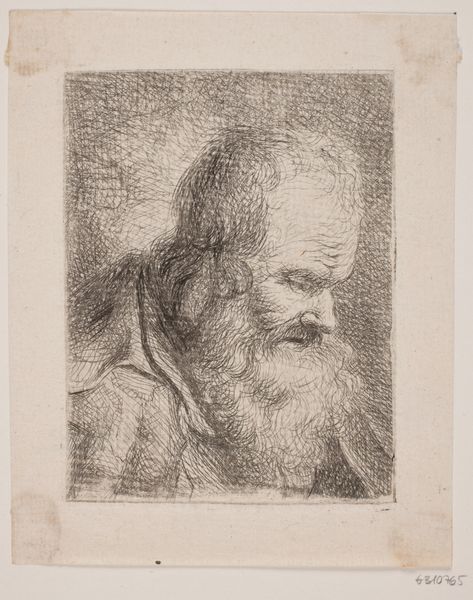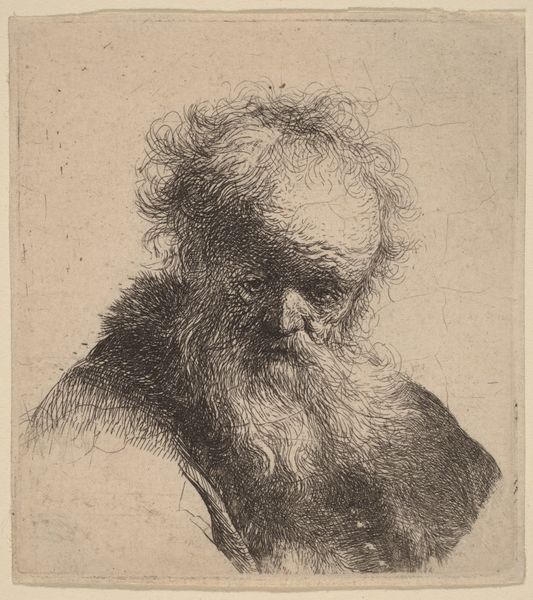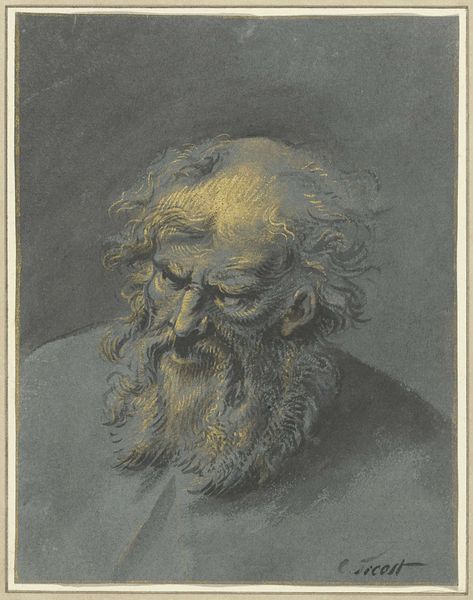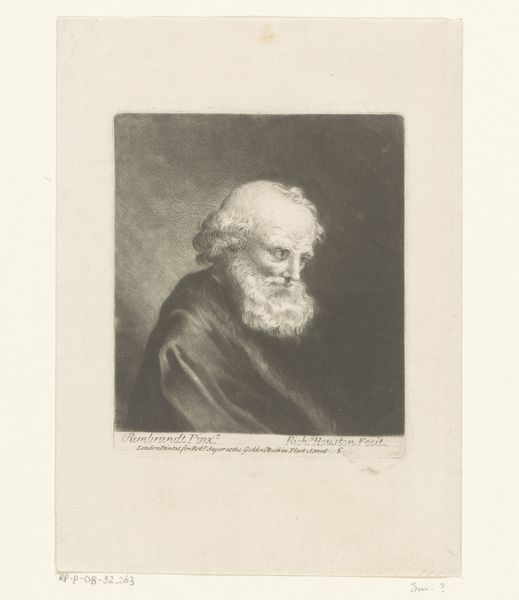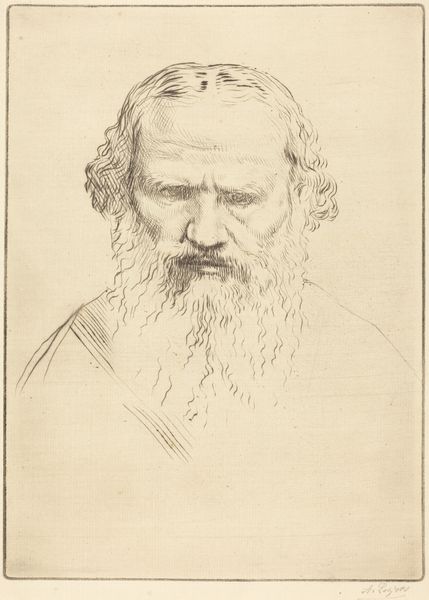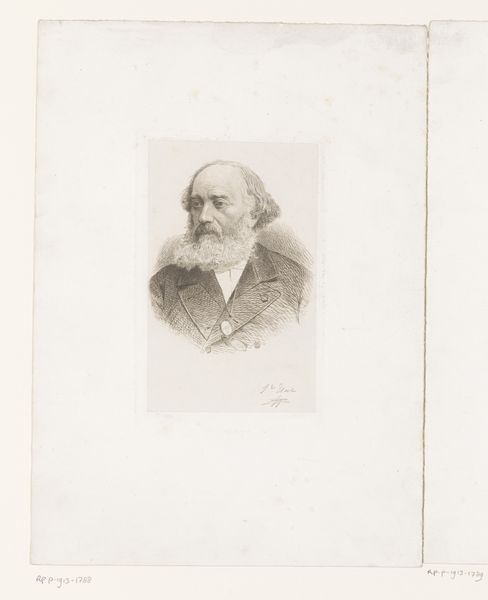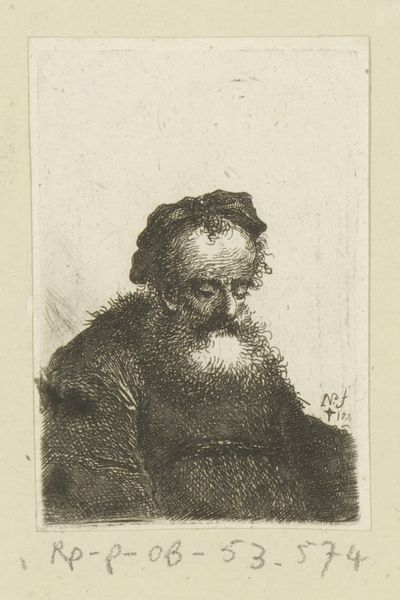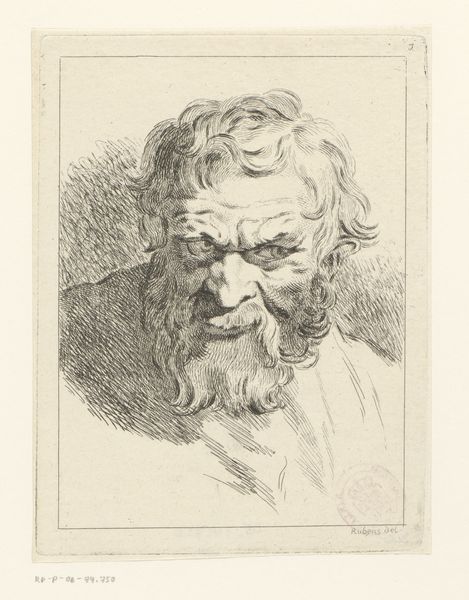
drawing, graphite
#
portrait
#
drawing
#
baroque
#
pencil drawing
#
graphite
Dimensions: height 168 mm, width 121 mm
Copyright: Rijks Museum: Open Domain
Curator: This is "Oude Man," or "Old Man," a graphite drawing completed in 1734 by Pierre Filloeul after an original design by Antoine Watteau. What are your initial thoughts? Editor: Stark. There’s a certain melancholy clinging to this profile, don't you think? The man's gaze is intense and weighted with something—experience, maybe. The image evokes ideas about masculinity and aging... but, to be clear, within a very particular, probably bourgeois, social framework. Curator: Interesting. I’m drawn to the mark-making. Note the cross-hatching that Filloeul employs to render texture and volume in the beard and hair. It's economical but incredibly effective. Think of the labour involved! The original was made by Watteau, and then later reproduced by Filloeul, revealing different kinds of engagement with printmaking culture in that period. Editor: And this drawing served as the basis for a print. What implications did the circulation of such an image have within the social and political landscape of 18th-century Europe? Was it meant as a commentary? Or merely an aesthetic study? Does this work engage in the depiction of a social type? Curator: That is a lot to unpack! Well, in the context of burgeoning print culture, reproducibility democratized imagery but also industrialized artistic production. Printmakers like Filloeul entered into a kind of collaboration with artists such as Watteau. The relationship between artisanship, industrialism and the ‘fine arts’ is thus brought to the fore. Editor: I see your point. Yet, considering the context, isn’t it important to also consider the implications and manifestations of class and wealth within art and art production at this time? It feels to me as though a crucial examination remains unspoken here. The visual culture reinforces the structures of a society marked by severe imbalances of power. Curator: Indeed. So perhaps considering this portrait and the material conditions of its making pushes us to reconsider power relationships embedded in what appears to be just a rendering of an old man. Editor: Absolutely. Thinking about it that way expands the possibilities for how we can begin to view historical objects such as this.
Comments
No comments
Be the first to comment and join the conversation on the ultimate creative platform.
